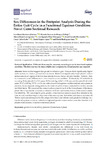Mostrar o rexistro simple do ítem
Sex Differences in the Footprint Analysis During the Entire Gait Cycle in a Functional Equinus Condition: Novel Cross Sectional Research
| dc.contributor.author | López-López, Daniel | |
| dc.contributor.author | Martínez-Jiménez, Eva María | |
| dc.contributor.author | Becerro-de-Bengoa-Vallejo, Ricardo | |
| dc.contributor.author | Losa Iglesias, Marta Elena | |
| dc.contributor.author | Díaz-Velázquez, José Ignacio | |
| dc.contributor.author | Casado-Hernández, Israel | |
| dc.contributor.author | Calvo-Lobo, César | |
| dc.contributor.author | Rodríguez Sanz, David | |
| dc.date.accessioned | 2022-03-17T13:17:54Z | |
| dc.date.available | 2022-03-17T13:17:54Z | |
| dc.date.issued | 2019-09 | |
| dc.identifier.citation | Martínez-Jiménez, E.M.; Becerro de Bengoa-Vallejo, R.; Losa-Iglesias, M.E.; Díaz-Velázquez, J.I.; Casado-Hernández, I.; Calvo-Lobo, C.; López-López, D.; Rodríguez-Sanz, D. Sex Differences in the Footprint Analysis During the Entire Gait Cycle in a Functional Equinus Condition: Novel Cross Sectional Research. Appl. Sci. 2019, 9, 3611. https://doi.org/10.3390/app9173611 | es_ES |
| dc.identifier.issn | 2076-3417 | |
| dc.identifier.uri | http://hdl.handle.net/2183/30050 | |
| dc.description.abstract | [Abstract] Some studies suggest that gender is related to gait. Females show significantly higher ankle motion and vertical ground reaction forces. Males have significantly larger plantar contact surface areas in all regions of the foot than females in most, but not all, prior studies. However, there is no research on sex differences in a functional equinus condition. In this study, 119 individuals, including 59 females (29.7 ± 5.15 years, 58.74 ± 6.66 kg, 163.65 ± 5.58 cm) and 60 males (31.22 ± 6.06 years, 75.67 ± 9.81 kg, 177.10 ± 6.16 cm), with a functional equinus condition walked onto a pressure platform. In two separate testing sessions, five trials of each foot were conducted for the first, second, and third steps. We measured the contact surface areas for each of the three phases of the stance phase. We computed the intraclass correlation coefficient and standard error of the mean to assess the reliability. We found significantly greater contact surface areas in males than females in the first, second, and third steps in all phases of the stance phase: heel strike, mid-stance, and take-off. This is important information for the design of footwear and orthotics and gender knowledge. In a functional equinus condition, males have registered greater contact surface areas than females in all phases of the dynamic footprint of the stance phase. | es_ES |
| dc.language.iso | eng | es_ES |
| dc.publisher | MDPI | es_ES |
| dc.relation.uri | https://doi.org/10.3390/app9173611 | es_ES |
| dc.rights | Atribución 4.0 internacional | es_ES |
| dc.rights.uri | http://creativecommons.org/licenses/by/4.0/ | * |
| dc.subject | Gender | es_ES |
| dc.subject | Género | es_ES |
| dc.subject | Foot | es_ES |
| dc.subject | Pie | es_ES |
| dc.subject | Reliability | es_ES |
| dc.subject | Fiabilidad | es_ES |
| dc.subject | Platform | es_ES |
| dc.subject | Plataforma | es_ES |
| dc.subject | Biomechanical phase | es_ES |
| dc.subject | Fase biomecánica | es_ES |
| dc.title | Sex Differences in the Footprint Analysis During the Entire Gait Cycle in a Functional Equinus Condition: Novel Cross Sectional Research | es_ES |
| dc.type | info:eu-repo/semantics/article | es_ES |
| dc.rights.access | info:eu-repo/semantics/openAccess | es_ES |
| UDC.journalTitle | Applied Sciences | es_ES |
| UDC.volume | 9 | es_ES |
| UDC.issue | 17 | es_ES |
| UDC.startPage | 3611 | es_ES |
Ficheiros no ítem
Este ítem aparece na(s) seguinte(s) colección(s)
-
GI-UDISAP - Artigos [196]






